
 |
| Why? | Who? | When? | Where? | How? | Thanks! | More |
The purpose of this expedition is to explore the deep coral reefs of the tropical western Pacific, in search of previously unknown species of marine life, using advanced diving technology. The expedition will serve, in part, as a demonstration project for the use of this technology for this type of scientific research, and perhaps will provide a rough indication of the extent of biodiversity inhabiting the coral-reef "Twilight Zone". Results of the expedition will be made available in three primary ways: 1) a documentary film will be produced and distributed by the Canal+ Network; 2) daily log reports summarizing each day's activities and findings will be posted to the World Wide Web; and 3) biological discoveries will be subsequently documented in appropriate scientific articles and presentations.
Expedition Leader
Richard
L. Pyle
Ichthyology, Natural Sciences Department
B.P. Bishop Museum
1525 Bernice Street
Honolulu, Hawaii 96817-0916
deepreef@bishopmuseum.org
![]()
Exploration Diver
John L. Earle
1221 Victoria Street
Honolulu, Hawaii 96814
![]()
Scientific Collaborator
Dr.
John E. Randall
Ichthyology, Natural Sciences Department
B.P. Bishop Museum
1525 Bernice Street
Honolulu, Hawaii 96817
jackr@hi.net
![]()
Film Crew
Thomas Lucas
Thomas Lucas Productions
356 West 58th Street
c/o WNET, 5th floor
New York,New York 10019
tlucas@emedia.net
![]()
Kenneth Corben
Always an Adventure Productions
315 1st St., Suite U140
Encinitas, California 92024
102524.2572@compuserve.com
![]()
![]()
Adam Ravetch
27 Wavecrest Avenue
Venice, California 90291
adamrav@aol.com
![]()
Logistical Support
Dr. Patrick Colin
Lori J. B. Colin
Coral Reef Research Foundation
PO Box 1765
Koror, Palau PW 96940
![]()
Lisa A.
Privitera
Hawaii Institute of Marine Biology
P.O. Box 1346
Kaneohe, Hawaii 96744
plisa@hawaii.edu
| 2 May 1997 | Richard Pyle, John Earle, and Ken Corben depart from Honolulu, Hawaii. |
| 3 May 1997 | Richard Pyle, John Earle, and Ken Corben arrive in Guam. |
| 4 May 1997 | Richard Pyle, John Earle, and Ken Corben arrive in Koror, Palau; commence initial exploratory dives with Pat and Lori Colin and establish transect lines. |
| 5 May 1997 | Richard Pyle, John Earle, and Ken Corben continue initial exploratory dives with Pat and Lori Colin and establishing transect lines. |
| 6 May 1997 | Tom Lucas, Adam Ravetch, and Lisa Privitera depart from U.S.; Richard Pyle, John Earle, and Ken Corben continue initial exploratory dives with Pat and Lori Colin and establishing transect lines. |
| 7 May 1997 | Tom Lucas, Adam Ravetch, Meredith Eder, and Lisa Privitera arrive in Guam; Jack Randall departs from Singapore; Richard Pyle, John Earle, and Ken Corben continue initial exploratory dives with Pat and Lori Colin and establishing transect lines. |
| 8 May 1997 | Tom Lucas, Adam Ravetch, Meredith Eder, and Lisa Privitera arrive in Koror, Palau; Jack Randall arrives in Koror, Palau; Richard Pyle, John Earle, and Ken Corben conduct final initial exploratory dives with Pat and Lori Colin and finish establishing transect lines (if needed). |
| 9 May 1997 | Filming and systematic exploratory dives begin. |
| 10 May 1997 | Filming and systematic exploratory dives continue. |
| 11 May 1997 | Filming and systematic exploratory dives continue. |
| 12 May 1997 | Filming and systematic exploratory dives continue. |
| 13 May 1997 | Filming and systematic exploratory dives continue. |
| 14 May 1997 | Filming and systematic exploratory dives wrap-up. |
| 15 May 1997 | All visiting expedition participants except for Richard Pyle, Lisa Privitera, John Earle, and Ken Corben return to the United States. |
| 16 May 1997 | Richard Pyle, Lisa Privitera, John Earle, and Ken Corben, along with Pat and Lori Colin, continue exploratory dives. |
| 17 May 1997 | Richard Pyle, Lisa Privitera, John Earle, and Ken Corben, along with Pat and Lori Colin, continue exploratory dives. |
| 18 May 1997 | John Earle returns to the United States; Richard Pyle, Lisa Privitera and Ken Corben, along with Pat and Lori Colin, wrap-up exploratory dives. |
| 19 May 1997 | Richard Pyle, Lisa Privitera and Ken Corben return to the United States. |
| 24 May 1997 | Ocean Planet exhibit opens at Bishop Museum. |
The islands of Palau (officially the "Republic of Belau") are an ideal location for deep coral-reef exploration. By virtue of its position about 800 km north of Papua New Guinea and 800 km east of Mindanao, Philippines (with various reefs in-between), Palau (134 30' N, 7 20' E) has the greatest marine biodiversity of any island group of Oceania (the islands of the Pacific Ocean not associated with continental shelves). Because of its spectacular reefs and variety of habitats, Palau was chosen as the first of the Seven Underwater Wonders of the World. Diving in Palau is ideal both in terms of general weather conditions and reef topography. The preponderance of vertical drop-offs, extending from near the surface to depths of several hundred meters, will greatly increase the efficiency, effectiveness, and safety of the planned diving regime. The marine flora and fauna of Belau is both rich and well-documented, and thus offers excellent opportunities for examining Twilight Zone species assemblages in the context of a well-documented shallow reef ichthyofauna. Water clarity in Palau is among the highest in the world. Thus, more photosynthetically viable sunlight penetrates to Twilight Zone depths, likely resulting in relatively high deep-reef biodiversity.
Logistical support available in Palau will greatly facilitate operations and will ensure a successful and safe expedition. The Coral Reef Research Foundation (CRRF), a marine field station located in Palau, will serve as base of operations during the expedition, and will provide an assortment of logistical support, including boats. Because Palau is a popular recreational diving destination, there are several SCUBA facilities and an active hyperbaric recompression chamber is available.
The following section briefly outlines the operational protocol followed during the expedition. This protocol represents a basic guideline for general operations. Deviations in actual operations from this protocol result from specific circumstances that unexpectedly arise.
Warning: Breathing compressed gas underwater, whether with conventional scuba or closed-circuit rebreathers, is a potentially dangerous activity that requires specialized training. Breathing gas mixtures other than air underwater and especially using rebreather devices underwater, are activities which require additional specialized training. No one should ever attempt these activities without adequate, proper training. The information contained on this web site are provided for informational purposes only; they do not constitute adequate or proper training!
Boats
The Coral Reef
Research Foundation owns and operates two dive boats. Both of
these are available on-site during all diving operations. The
larger boat remains anchored and serves as the main dive
platform. The smaller boat is used as a "chase" boat to
pick up divers who surface far from the main boat, and is
available for use in the event of a diving accident or emergency.
Diving
Deep dives are to be conducted using closed-circuit rebreathers developed and built by Cis-Lunar Development
Laboratories. Most deep dives are conducted by a team of
three divers: Richard Pyle and John Earle are the lead divers and
specimen collectors, and Ken Corben
is the underwater cinematographer. Pat
Colin also conducts deep dives using his own rebreather.
Maximum depths range from 250 to 500 feet (75 to 150 meters), and
bottom-times range from 30 to 90 minutes. On some occasions, two
deep dives may be conducted on the same day. Most deep dives are
conducted along a transect line extending from the boat anchor to
the depth of operation. Other dives involve free-drifting divers
towing floats. Specific operational protocol for rebreather
diving follow general guidelines as published in Pyle, 1997.
Both anhydrous Lithium Hydroxide and Sofnolime are used as carbon dioxide absorbent materials during this expedition, depending on the specific dive parameters. The oxygen parital pressure "set-point" used for both deep portions of the dive and decompression is 1.4 atmospheres. The maximum partial pressure of nitrogen in the breathing gas is 2.6 atmospheres.
Decompression procedures and patterns depend on specific dive profiles. Primary decompression information is obtained from the integrated computers built into the Cis-Lunar rebreathers. Each diver also carries a set of decompression tables for a variety of contingency profiles, in the event of a rebreather computer malfunction. Additional copies of these tables are attached at intervals on the transect lines. Decompression profiles are modified to include "deep safety stops", as outlined by Pyle (1996).
Specific bailout and emergency procedures depend on specific circumstances. For dives along transect lines, additional gas cylinders are staged at several depths. In most cases, these include two 80 cubic-foot cylinders of Trimix-10/40 staged at 330 feet (90 meters), two 80 cubic-foot cylinders of air at 180 feet (54 meters), and surface-supplied oxygen at 20 feet (6 meters). Additional supplies of Nitrox-50 are available on the boat and can be deployed to divers if needed. On all dives, emergency floats sent to the surface signal a need for gas supplies sent to divers. A single 80 cubic-foot air cylinder with dual 2nd-stage regulators is attached to the emergency float line and dropped to the waiting diver; other gas supplies are provided to the diver as needed. In the event that any diver experiences symptoms of decompression sickness following a dive, the immediate response is the administration of oxygen at the surface. Depending on the progression of symptoms and the distance and time to the recompression chamber, immediate in-water recompression procedures may be employed. In all cases, divers who experience such symptoms will consult with the local hyperbaric specialist prior to continuing diving activities.
The following companies and organizations provided assistance and/or support during this expedition.
 |
The majority of funding for this expedition was provided by The Discovery Channel, in conjunction with Canal+ Network in France. An award-winning documentary film featuring this expedition, entitled Mysteries of the Twilight Zone, was first broadcast in April of 1998. | |
 |
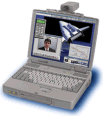 Several
important objectives of this expedition (including the
daily log reports) were made possible through the
generous support of Toshiba
America, Inc., who donated a Tecra-740
notebook computer. Several
important objectives of this expedition (including the
daily log reports) were made possible through the
generous support of Toshiba
America, Inc., who donated a Tecra-740
notebook computer. |
|
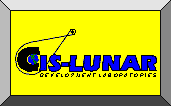 |
This expedition would not have been possible without the Herculean efforts of Richard Nordstrom, Bill Stone, Nigel Jones, and Michael Stevens, of Cis-Lunar Development Laboratories, Inc. Thanks guys! Awesome machine. | |
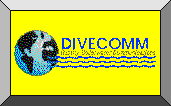 |
Special thanks are owed to DiveComm, makers of electronic underwater wireless communication systems, who loaned an assortment of valuable equipment for use on this project. | |
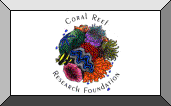 |
Dr. Patrick Colin and Lori Colin, Directors of the Coral Reef Research Foundation in Palau, were instrumental in assisting the organization of this expedition and in providing logistical support. Without their help and support, this expedition would have been impossible. | |
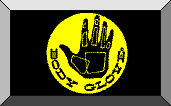 |
Many thanks to Body Glove, who provided custom wetsuits to expedition participants. Even in the warm tropics, the water temperature is cold down deep, and with dive durations exceeding 4 hours, thermal protection is important. The Body Glove wetsuits are ideal. | |
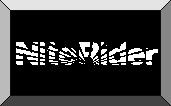 |
NiteRider supplied underwater lighting systems at cost for use during this expedition. The head-mounted dual bulb lights enable us to keep both hands free to collect specimens, while illuminating even the darkest corners of the reef with up to 70 watts of power. | |
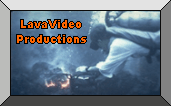 |
LavaVideo Productions provided the use of a digital video (DV) camera and underwater housing for this project, enabling both underwater videography at depths to 330 feet, and the capturing of digital images of fishes collected so that those images could be included on this web page. |
Specimen collections during this expedition were made with the full cooperation of the Palau Ministry of Resources and Development, under Scientific Collecting Permit number RE-97-02.
This expedition represents Richard Pyle's first return to the islands of Palau since 1986, when he suffered a severe case of decompression sickness, or the "bends". A complete account of this story is available here and elsewhere on the web.
Note: No Bishop Museum personnel will receive any salary or other form of compensation for any time spent underwater during this expedition.
![]() Palau
'Twilight Zone' Expedition
Palau
'Twilight Zone' Expedition
Return to the Palau 'Twilight Zone'
expedition home page.
![]() BISHOP MUSEUM
BISHOP MUSEUM
Return to the Bishop Museum home page.
Copyright 1997, by Bishop Museum. All rights reserved. All media are for the personal use of students, scholars and the public. Any commercial use or publication of them is strictly prohibited.